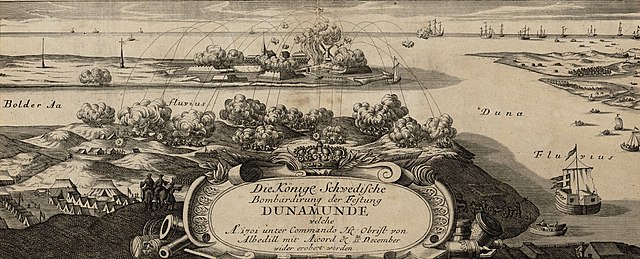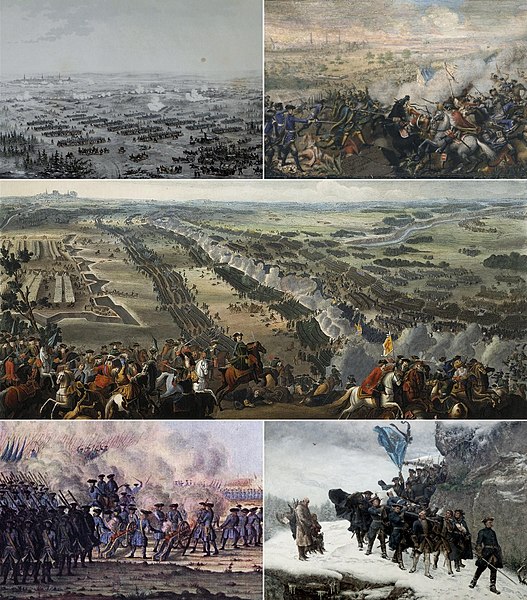The Crossing of the Düna took place during the Great Northern War on July 19, 1701 near the city of Riga, present-day Latvia. The Swedish king Charles XII was in hot pursuit of king Augustus II the Strong of the Polish–Lithuanian Commonwealth and Saxony. The crossing was easily made, and the coalition troops were quickly broken and retreated.
Medallion of Charles
Charles XII is crossing the Düna
Swedish floating battery, similar used at Düna
Swedish bombardment of Dünamünde, 1701
The Great Northern War (1700–1721) was a conflict in which a coalition led by the Tsardom of Russia successfully contested the supremacy of the Swedish Empire in Northern, Central and Eastern Europe. The initial leaders of the anti-Swedish alliance were Peter I of Russia, Frederick IV of Denmark–Norway and Augustus II the Strong of Saxony–Poland–Lithuania. Frederick IV and Augustus II were defeated by Sweden, under Charles XII, and forced out of the alliance in 1700 and 1706 respectively, but rejoined it in 1709 after the defeat of Charles XII at the Battle of Poltava. George I of Great Britain and the Electorate of Hanover joined the coalition in 1714 for Hanover and in 1717 for Britain, and Frederick William I of Brandenburg-Prussia joined it in 1715.
From left to right: Battle of Narva (1700) Charles XII crossing the Düna (1701) Peter I at the Battle of Poltava (1709) Battle of Gadebusch (1712) Bringing Home the Body of King Charles XII (1718)
The bombardment of Copenhagen, 1700
Battle of Riga, the first major battle of the Swedish invasion of Poland, 1701
Battle of Gangut (Hanko)







